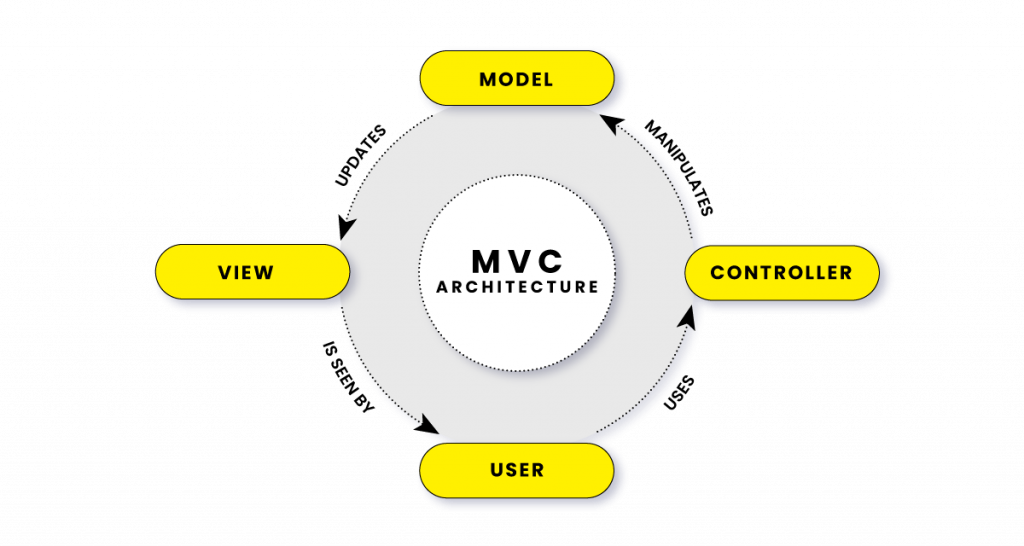MVC is a frequently used industry-standard pattern, no matter the developer’s programming language. Get to know all the benefits and drawbacks of using the MVC during application development and advantages of MVC.
Introduction to Onshore Software Development
Onshore software development refers to the process of creating software within the country where the company’s headquarters are located. It serves as an alternative to offshore software development, which takes place in a different country. Onshore software development offers numerous advantages, such as faster project delivery times, improved communication with clients, and greater control over the project. This allows companies to manage their resources more effectively and better meet customer needs. By choosing onshore software development, businesses can also leverage local talent and technology, contributing to a higher quality final product.
What is MVC?
MVC stands for Model-View-Controller, and it is a methodology, an architectural pattern, or a software architecture design used in the software or application development process. MVC divides an application into three main components: Model, View, and Controller, where each of them handles specific responsibilities.
Model-View-Controller was traditionally used for desktop graphical user interfaces (GUIs). Today MVC is a common choice for developers during their work on the design of web, mobile, or desktop applications. The features of MVC, such as separation of concerns and ease of testing, make it highly suitable for these platforms. Many programming languages, like Java, C#, Ruby, PHP, and integrated development environments support MVC architecture.
Levels of Model-View-Controller architecture
There are three interconnected parts of MVC: the model (data model), the view (user interface), and the controller (request handler). MVC pattern organizes the system architecture by separating crucial parts like input, processing, and output.
In MVC application development, the controller accepts all application requests and advises the model to prepare any data requested by the view. The view brings the final visual output using the data produced by the controller.

Model
Model is responsible for data management, including data storage, processing, and business logic. Model is considered the lowest level of MVC pattern.
View
The view is a visual representation of the data. It displays the model data to the user, including windows or buttons, by generating the UI. View level receives requests from the user and sends user actions to the controller.
Controller
Controller is the main component of MVC architecture, and it connects Model and View as a request handler. The controller accepts inputs and provides necessary updates.

Learn reasons why Java is a popular choice
Top 5 Reasons Why Java Is So Favored By Software Developers
What are the benefits of using MVC?
Organizes large-size web applications
Because the code is separated into three components, it’s much easier to divide and arrange web application functionality into large-scale apps. The main benefit of implementing the MVC pattern is that it makes it easier to locate certain code sections and add new functionality quickly.
Easy planning and maintenance
The MVC pattern is helpful during the application’s early design phase since it gives the developer a blueprint on how to turn their thoughts into code. It’s also a great way to reduce code duplication and simplify application maintenance.
Easily modifiable
MVC allows adding and updating new views, never impacting the overall architecture. This improves the application’s flexibility and scalability.
Facilitates multiple views
Developing different view components for your model component is accessible with an MVC framework. It allows you to create several view components, reducing code duplication by separating data and business logic.
Faster development process
When developing web applications using the MVC architecture, one developer can work on one area (for example, the view) while another works on a different section (for example, the controller). The application created with an MVC framework may be completed faster without using any patterns.
Support for Asynchronous Method Invocation (AMI)
Because the MVC pattern is compatible with JavaScript and its frameworks, it’s no surprise that it also supports Asynchronous Method Invocation (AMI). AMI allows developers to create web applications that load faster. MVC applications can function with PDF files, site-specific browsers, and desktop widgets.
MVC returns the data without formatting
The data returned to the view is not formatted in any way by an MVC framework, which allows developers to use whatever technology they want to represent that data.
MVC supports test-driven development (TDD)
The MVC pattern significantly simplifies the testing process. Multiple layers are logically specified and appropriately stated in the program, making it easier to debug large-scale systems. As a result, writing unit tests for an application is a breeze.
SEO-friendly development platform
The MVC supports the development of SEO-friendly web applications and web pages. MVC makes it simple to create SEO-friendly URLs for a particular application to increase traffic.
Technologies used in Onshore Software Development
Onshore software development employs a variety of technologies that enable the creation of modern and efficient applications. Here are some examples:
- Spring Framework: Spring Framework is a popular platform for building web applications in Java. It allows for the development of scalable and flexible applications that easily integrate with other systems.
- Web API: Web API is an application programming interface for creating web applications in C#. With Web API, it is easy to develop web services that communicate with various clients.
- ASP.NET: ASP.NET is a platform for developing web applications in C#. It supports the creation of dynamic and interactive applications that are easy to maintain and expand.
- Video Course Platform: A video course platform is a solution for creating video applications in C#. It enables the development of interactive online courses and training programs accessible to a broad audience.
- Database: Databases are systems for storing and managing data. In onshore software development, various databases such as MySQL, PostgreSQL, and MongoDB are often used to ensure efficient data management.
- .NET MVC: .NET MVC is a platform for building web applications in C#. It follows the Model View Controller pattern, contributing to better code organization and easier project management.
- Model View Controller (MVC): MVC is a design pattern that facilitates the creation of web applications in C#. It separates business logic from the user interface, making the development and maintenance of applications more straightforward.
Are there any disadvantages of the MVC pattern?
There are a few disadvantages of MVC architecture:
- the complexity in code navigation (with all updates, the structure becomes more complex),
- the cost of frequent changes and updates,
- MVC pattern can be hard to understand due to the complexity and updates,
- MVC must have strict rules over methods (appropriate reactions from Controller),
- developers need to know multiple technologies in order to understand and use MVC,
- developers also need to enter text in various formats and platforms, which adds to the complexity of using MVC.
Model-View-Controller is a solid structure
The MVC pattern is an excellent method for developing software applications. MVC frameworks are simple due to the numerous benefits, including organizing code and managing multiple views. As a consequence of efficiency, IT projects designed using the MVC approach can be developed for less money and in less time.
Build your application with our team and be ready to boost your business! To learn more about MVC or to get in touch with our team for assistance: https://fireup.pro/contact

